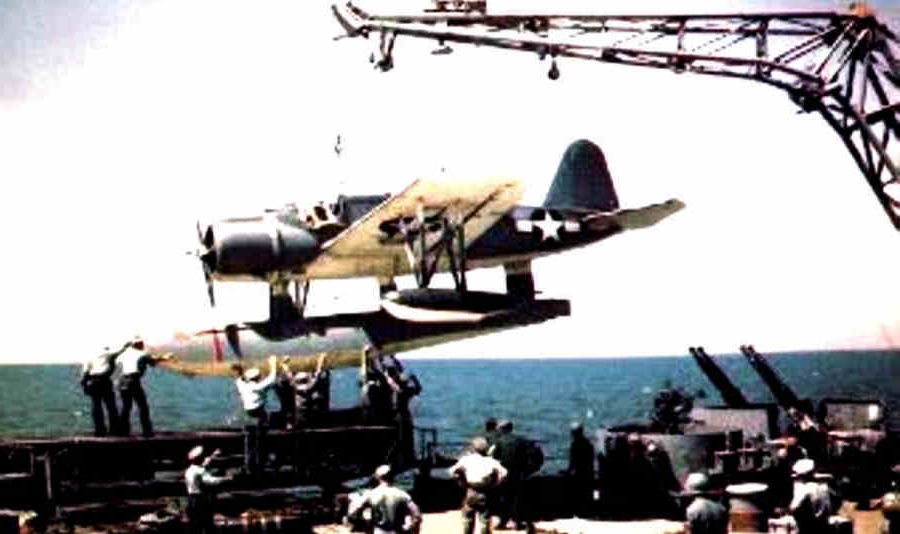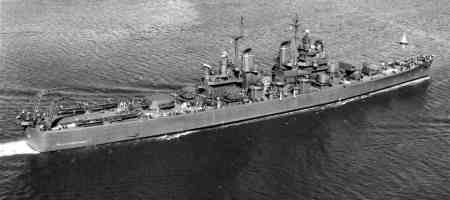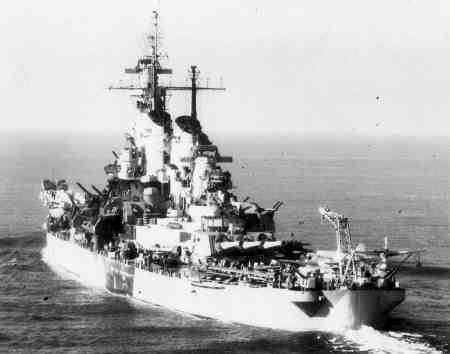
OS2U Kingfisher or Hellcat ?
Click images below for larger view
|
From the fan tails of
Battleships and Cruisers USS Missouri (BB-63)
USS Canberra (CA-70/CAG-2)  |
 |
|
THE WORLD WAR
TWO COMBAT HISTORY OF VOUGHT'S
OS2U KINGFISHER
During World War Two, Vought OS2U Kingfishers, the "eyes of the fleet," took part in all major Pacific actions from Pearl Harbor to Tokyo Bay. They spotted Naval gunfire bombarding Jap-held islands from the Solomons to the Marshalls, the Gilberts, the Marianas, Iwo Jima and Okinawa. They worked with the PBY Catalina seaplanes to rescue downed pilots by the score from the jeep and fast carrier task forces that attacked those islands. Some of the most thrilling rescues of the conflict were made by Kingfisher pilots in the Western Pacific, often teaming up with submarines. The two-seat OS2Us would pick up several pilots and taxi miles through rough seas. Fliers would hang onto wings or in life rafts towed behind the plane, until a sub or ship relieved them of their grateful load. The best-known rescue of the entire war
involved Capt. Eddie Rickenbacker, America's leading ace of WWI.
Rickenbacker was flying to the South Pacific in a B-17 Flying Fortress
during October 1942, and the plane went down and for three weeks a huge
air-sea search failed to find them. Then on 11 November, fittingly
enough WWI's Armistice Day, an OS2U based on Ellice Islands and piloted
by Lt. (jg) F.E. Woodward spotted a yellow dye marker on the ocean
surface. This same airplane, nicknamed The Bug assigned to the USS
Pennsylvania, had escaped major damage in the Jap attack on Pearl
Harbor. It took off the next day, 8 December, to search vainly for the
Japanese fleet. From: LookSmart |
|
Go To: Airplane Page